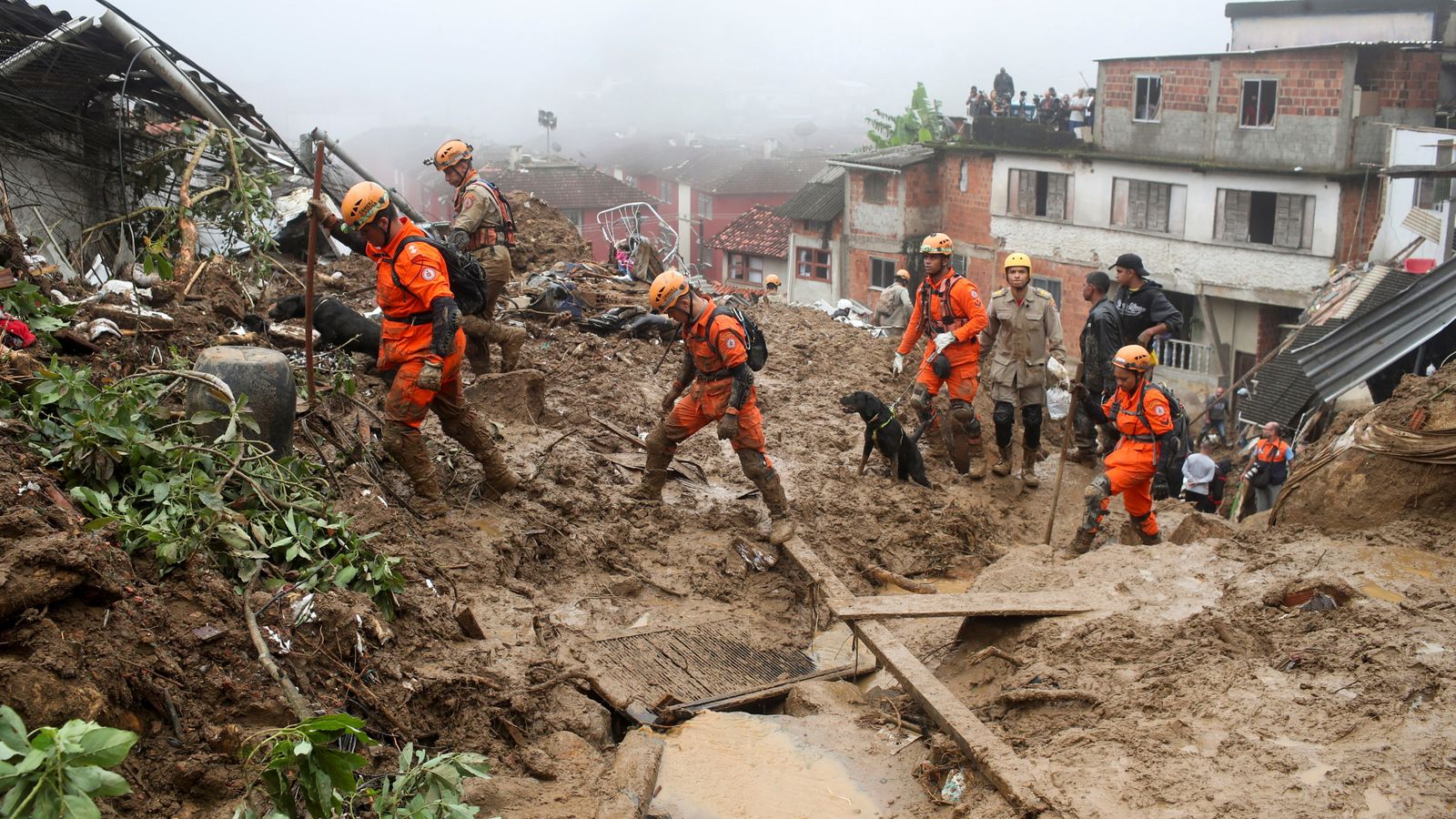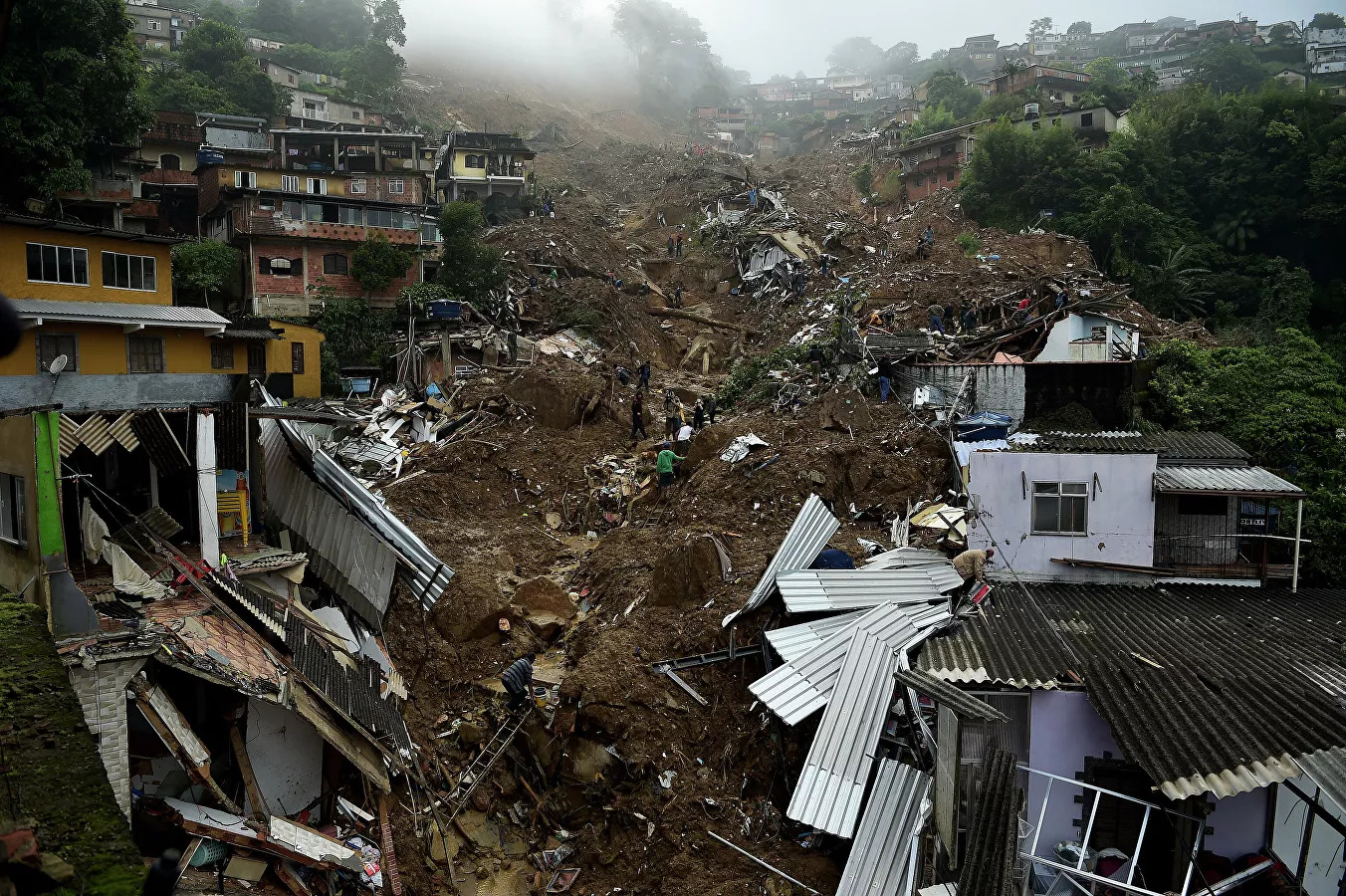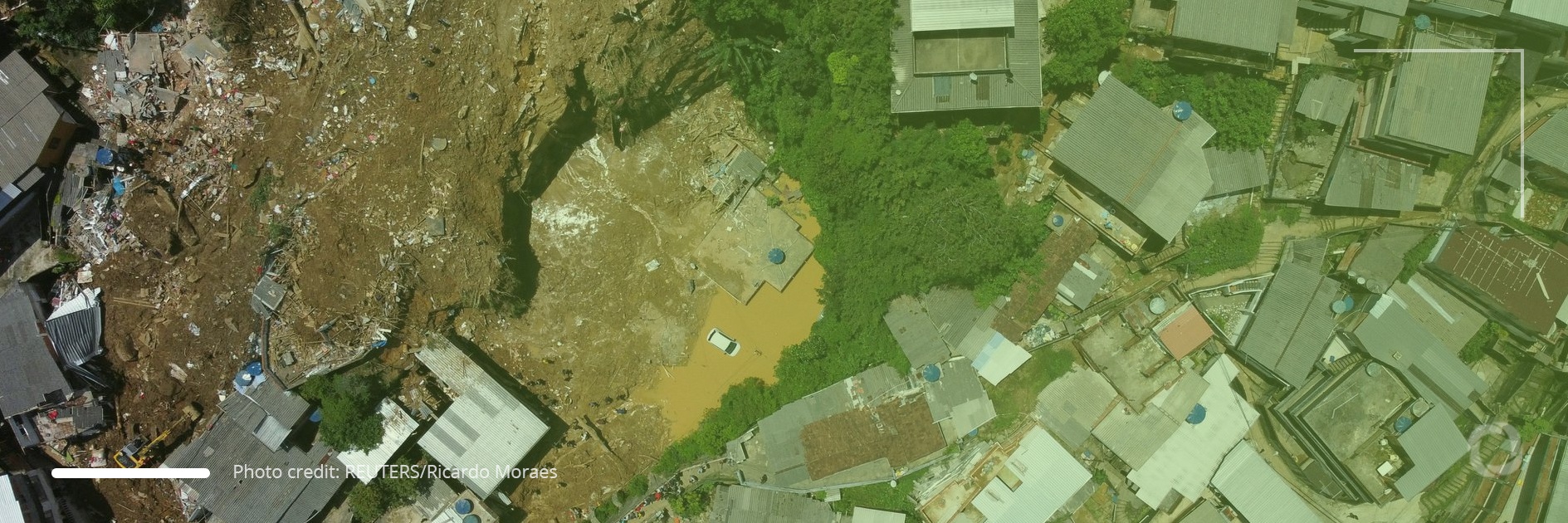More than 110 people died after heavy rain hit Petropolis on Tuesday (15 February), a city in the mountainous region of Brazil’s Rio de Janeiro state. City streets were flooded by the downpour while landslides also resulted in fatalities. At least 80 houses were destroyed by the rains that hit the region and more than 370 people sought accommodation in makeshift shelters.
In many parts of the city, it was difficult to distinguish what was a house, what was land, or what was a street. Hillsides tumbled down, carrying rocks the size of cars, vehicles were piled up by the force of the current, and major roads were blocked, making access difficult for those left homeless.
“It was the worst rain since 1932. Actually, it was 240 millimeters in two hours. It was a highly extraordinary rain”, said the Governor of the State of Rio de Janeiro, Claudio Castro, during a press conference.

Rescuers are still looking for survivors among the mud and rubble while locals wait anxiously for news. More than 40 people have disappeared.
According to the National Monitoring and Alert Center, the possibility of more mass movement events remains very high with the level of soil moisture currently high enough to cause landslides even without any more rain.
Tragedy announced
At the end of last year, Inmet, the agency responsible for meteorology in Brazil, had already issued an alert predicting that the country could face fresh disasters due to excessive rain at the beginning of this year. The data indicated intense precipitation with volumes that could exceed 200 millimeters. In Petrópolis, this prediction proved accurate with 240 millimeters falling in just two hours. Actual rivers formed in the streets of the mountainous city, carrying away houses and people.
The climate in the largest country in South America has already evidenced that tragedies such as this will no longer be isolated with experts believing that from now on this will be the “new normal”. Recently, Brazil faced heatwaves in the South region, with a drought in the countryside, and at the same experienced minimum temperatures never before recorded including snowstorms in a country that has a dominant tropical climate.

“Climate change is no longer a possibility, it has already entered people’s homes. We have already left the phase of predicting what could happen to enter the phase of the consequences”, said Pedro Côrtes, Professor at the Institute of Energy and Environment at the University of São Paulo (USP).
Lack of infrastructure
This was not the first tragedy that Petrópolis has recorded in recent years. The year 2011 marked the biggest climatic catastrophe in the history of Brazil when heavy rains devastated several municipalities in the region and left more than 900 dead and almost 100 missing in the Serrana Region.
In the last 11 years, the state has been ruled by five governors, and very little has been done to prevent natural disasters and the consequences of climate change. Although the Federal Government had promised to recover slopes, reforest the banks of the rivers, and relocate residents living in risky areas, in the last decade nothing has yet happened.
“We should have taken a very serious attitude given the fragility of these sites. They are very fragile urban sites with very sharp population growth. The issue is that it stopped raining and these extreme events have a recurrence of 10 years, the last was in 2013, 2011 before. In the meantime, it seems that this public policy has been forgotten”, criticizes geologist Marcelo Motta.
Asked if more resources could be channeled to preventative actions, the Governor of Rio de Janeiro, Claudio Castro, said that the situation was a combination of “a historic tragedy with a deficit that really exists”.
“We need to understand that there is a historical debt from other tragedies we have had. And another aspect was the exceptionally severe character of this tragedy. This was the heaviest rain since 1932. Uniting a historic tragedy with a deficit that actually exists caused all this damage. May it serve as a lesson so that, this time, we act differently. It is already being different”, said Castro.
This is not the first climate-caused disaster Brazil has witnessed lately. Since November 2021, the states of Minas Gerais and Bahia have reported damage in more than 400 cities as the two were hit by flooding and landslides following heavy rains. Over 50 people died in the two states, more than 500 were injured and some 150,000 were displaced due to the floods and landslides.

